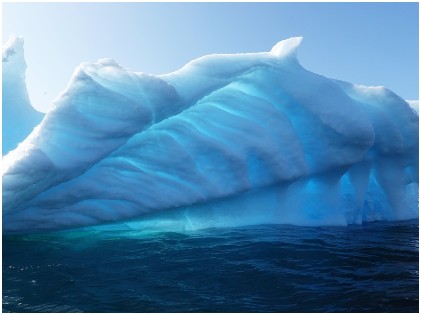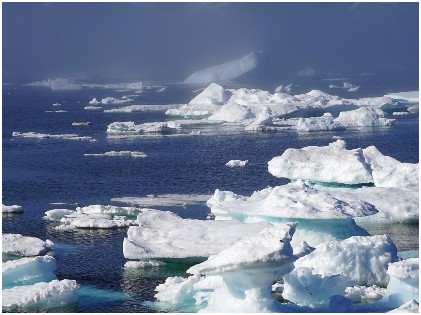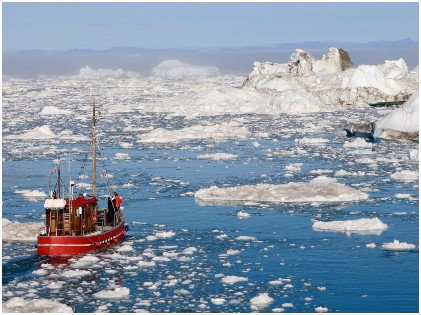Located between the Atlantic Ocean and the Arctic Ocean, Greenland happens to be the largest island in the world. Being an autonomous territory that lies within the Kingdom of Denmark, Greenland is culturally and politically associated with the European continent, especially Denmark and Norway. The island has recently been going through a change in its environment.
The absence of fresh snow leads to the darkening of its surface. Of course, it is melting faster—a deficit of snow results from the change in the weather system. Since 1982, the temperature of the ice sheet over Greenland has risen by 2.7 degrees Celsius. Darker snow and the ice soaking up more heat can lead to a quick rise in the sea level. This is alarming.
Lack of Fresh Snow

The MODIS satellite of NASA has revealed some data that shows that the island’s surface has been reflecting less light over the past twenty years. As per the new study, the surface has dust, soot, and micro-organisms contamination. Since the weather patterns are changing, there is a lack of fresh snow on Greenland’s surface. As a consequence, the grains of the snow are growing larger and becoming less reflective.
When there is a fresh snowfall, and the sunlight falls on the surface, the reflection can be blinding. Therefore, you would always need sunglasses while stepping out. Two to three days post that, the reflection won’t be the same and will be much easier on the eyes. Since snow ages over some time, fresh snowfall is always important.
Amount of Snow in Goldilocks Zone
 According to a research team, the amount of dust, soot, micro-organisms, and other impurities in the snow covering the southwestern coast of Greenland is around 1 part for 1 billion. Hence, that is some of the cleanest snow you would find.
According to a research team, the amount of dust, soot, micro-organisms, and other impurities in the snow covering the southwestern coast of Greenland is around 1 part for 1 billion. Hence, that is some of the cleanest snow you would find.
On a snowmobile trek of almost 4400 kilometers over the mid-elevation region, the scientists found that the surface temperature rises to a level where the ice sheet melts over 10 to 20 days in the summer season every year. However, snowfall is more on average as compared to melting or evaporating. The balance has been undergoing a distinct change over the last few decades. Climate change caused due to human activities has accelerated snow melting across the surface of the island.
Increase in the Size of Snowflakes

The experts measured every snow grain in the percolation zone. An increase in their sizes might have led to the changes in reflectivity, they feel. Snowflakes are the delicate points that tend to either melt or evaporate. As a result, they get rolled into blobs that lose the capacity of reflecting sunlight. Instead, they absorb more sunlight than usual. That leads to the darkening of the snow surface. The naked eye cannot measure the difference.
However, a minor change like 1% in reflectivity could result in the loss of 25 gigatons of ice over three years, reveal the experts. Once fresh snow settles down on the ice sheet, and the sunlight falls on the layer, the snow starts to metamorphose. Consequently, the snow grains increase in size with time. Storms that were responsible for fresh snowfall are not a frequent occurrence these days.
The Atmospheric Blocking
There was a significant increase in the duration and frequency of atmospheric blocking over Greenland during the mid-nineties. This particular pattern greatly influences the Northern Hemisphere weather and has been tracked as Greenland Blocking Index by meteorologists. Researchers have no clue why this weather pattern has climbed up to record levels over the past decades.
They have also been unable to infer how this particular climate change caused by human activities affects the changes in weather patterns. The high pressure over the ice sheet stays on for days and even weeks. The path of the other weather systems gets blocked. Since snowstorms moved towards the northern side, fresh snow doesn’t cover the ice sheet’s surface as frequently as it used to.
Atmospheric blocking leads to a rise in surface temperatures. As a result, less snowfall occurs, making the ice sheet darker. This is the primary reason why Greenland is melting so fast. Government, organizations, and individuals need to act fast to prevent natural calamities and disasters prevent the ice from melting. It is important to ensure that the world is a safe place for future generations.





